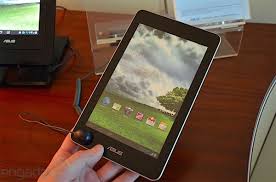The data for tablet sales is out for the first quarter of 2013 and let us have a quick look at those data to know which giant is sitting where.
Apple:
Apple, i.e. iPad, continues to be the number one choice for the tablet buyers. The company has sold approximately 20 million iPads this quarter which is almost double of what it sold in the same of 2012. Actually, out of every three tablets sold, there is one iPad. Purist might say the actual percentage is even higher than that by a few points. But the relative sales have gone drastically down for Apple. The company now has 34% market share which is down from 60% market share from first quarter of 2012. Apple might still be number one, but it has lost serious grounds to its main competitors, Samsung and Apple.
The last model of iPad was launched in November 2012 named iPad 4. It has, among other things, 128 GB of storage, 4G LTE and better wireless support. The lightning port has also been introduced which is much smaller and thinner and has allowed the iPad model to be thinner than the predecessors.
You can also read the article 5 Facts About War Between Apple And Samsung to know more abut this two companies and the cold war between Apple and Samsung.
Samsung:
Samsung is in the second place, according to the sales data for the first quarter of 2013. The company has sold around 9 million tables which gives them a market share of 19%. The gap between Samsung and Apple is still wide enough as we can see. Apple has sold more than double of Samsung. But this gap used to be wider previously. Again, if the top selling models of each company are compared, Apple will be far ahead of Samsung. Samsung is offering a wide variety of relatively cheaper Android tablets to counter Apple.
Samsung’s main products seem to be Galaxy Tab as well as the phablet Galaxy Note. Galaxy Tab 2 is presently the highest selling model from Samsung. It features 2 GB of RAM and 16 GB of inbuilt memory. The storage can be increased of course by inserting microSD cards of up to 64 GB, giving it a total of 80 GB of storage. The plastic casing makes the tablet somewhat lighter if not fragile as well.
Asus:
Asus has seen exceptional growth since it teamed up with Google to produce Nexus 7. The company is moving up both relatively and in absolute numbers since its Nexus 7 offered very high quality tablet at a very low rate. Nexus 7 is a tablet by Google but manufactured by Asus, by the way. With a 32 GB of storage; and strangely enough, no external storage slot; a quad-core processor, 2 GB of RAM and the world’s best display for tablets, Nexus 7 was a delightful deal for anyone. Amazon has been dominating this particular market segment for a long time and any industry experts believe that it is a direct response to Amazon. The competition has just got fiercer in this category.
Amazon:
Amazon is the only company who should be really worried about the sales report of its first quarter of 2013. Amazon, which has been the biggest name in eBooks for a long time now, was planning to move into premium tablets soon with high price tag as well as high quality tablets. The shift of domain from ebooks to tablets was not welcome by many. Anyway, Amazon sales its flagship Kindle Fire directly from the online book store it has. They have resisted the physical stores till now. The device runs on a heavily modified Android OS, ripping away anything and everything which has to do something with Google, and this allows Amazon to breathe easily outside Google ecosystem. The device runs pretty smoothly and has a nice 7 inch display. The free and premium contents can be downloaded from amazon.com. One thing which Amazon proved beyond doubt is the production cost of premium hardware is not as costly as other manufacturers pretend.






